History and Evolution of Wooden Bathtubs and Washbasins
Estimated reading time: 11 minutes
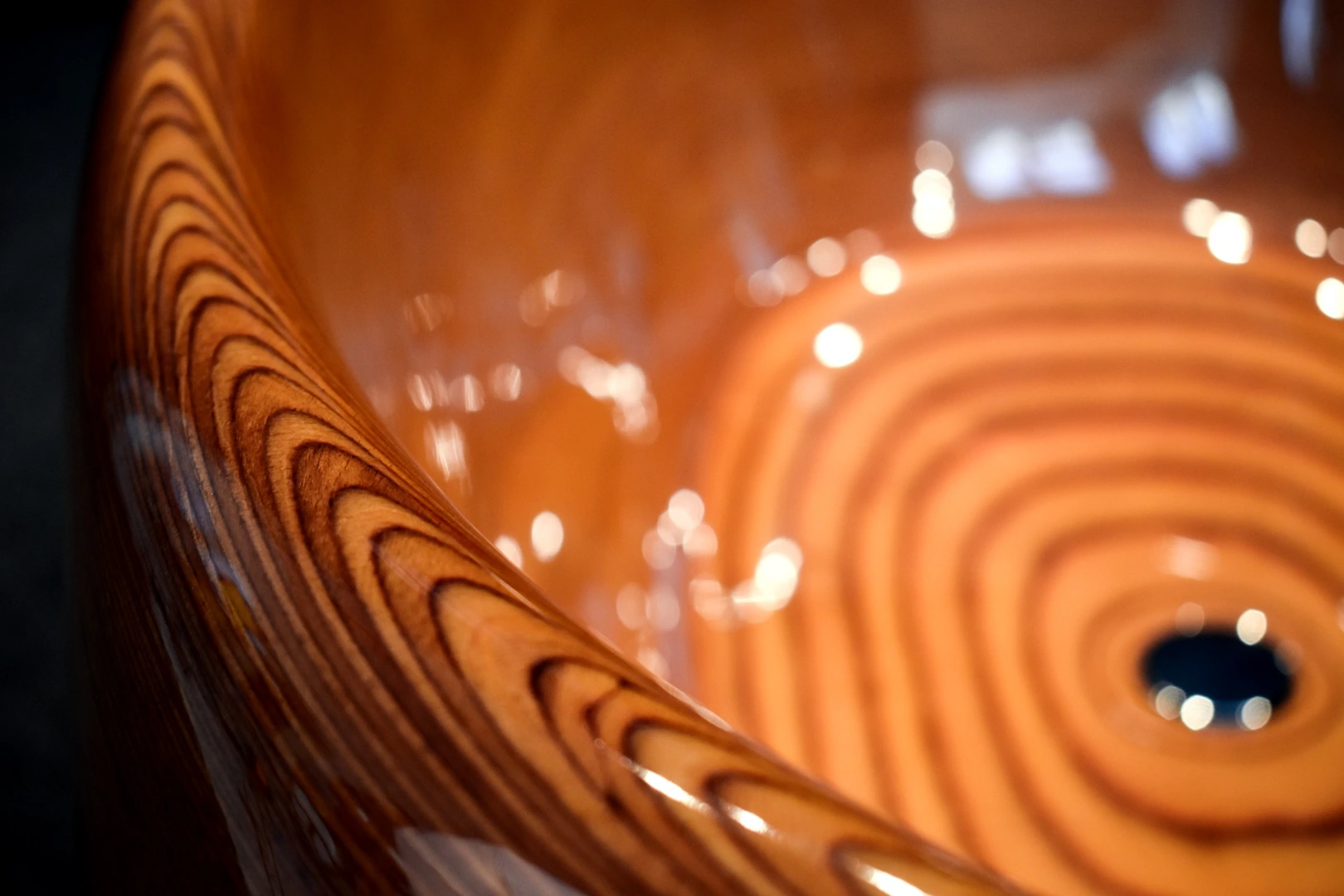
The history of wooden baths and washbasins is a fascinating tale of cultural evolution, artistic expression, and practical innovation. Spanning several centuries and various cultures, these items have continuously adapted to the changing needs and aesthetics of society, reflecting shifts in hygiene, comfort, and luxury.
Beginnings in Antiquity of Wooden Bathtubs
Wooden baths have their origins in ancient civilizations, notably Japan, Scandinavia, and Eastern Europe. In Japan, the “ofuro,” a deep wooden soaking tub, was central to traditional bathing practices. It was often made from hinoki wood, prized for its aromatic properties and resistance to moisture. These tubs were more than functional items; they were integral to Japanese rituals and family life.
In Scandinavia, wooden tubs were essential for the Vikings, serving both practical and social purposes. Large enough for communal use, these tubs were central to Viking culture, promoting cleanliness and fostering community bonds.
Middle Ages and Renaissance
During the Middle Ages and Renaissance, wooden baths and washbasins took on a new significance in Europe. They became symbols of status and wealth among the nobility. Craftsmen created elaborate and ornate baths, often lined with metals like copper to retain heat and prevent leaks. These baths were not only functional but also portable, reflecting the itinerant lifestyle of some nobility.
Simultaneously, washbasins evolved significantly. From simple wooden bowls, they transformed into sophisticated items of personal hygiene. Artisans would carve intricate designs into the wood, making each basin a work of art. This period saw a blend of functionality and aesthetic beauty in wooden bathroom fixtures.
Industrial Revolution Impact
The Industrial Revolution brought profound changes. New manufacturing techniques and materials, such as porcelain and metal, began to dominate. Wooden baths and washbasins became less common, but they never completely disappeared. Their aesthetic and tactile appeal ensured they remained a niche but cherished choice in some households. The late 19th and early 20th centuries witnessed a revival of interest in natural materials and craftsmanship. This period saw a resurgence of wooden baths and washbasins, combining traditional techniques with modern design sensibilities.
Contemporary Resurgence
In recent times, there has been a noticeable resurgence in the popularity of wooden baths and washbasins. This trend is driven by a growing emphasis on sustainable living and a renewed appreciation for natural materials and artisanal craftsmanship. Advances in wood treatment and waterproofing technologies have made wooden bathroom fixtures more practical and durable.
Modern designers are skillfully blending traditional aesthetics with contemporary designs, creating pieces that are both functional and visually stunning. The choice of wood has also broadened, with teak, cedar, oak, and bamboo being popular for their durability, beauty, and sustainability.
Conclusion
In summary, wooden baths and washbasins represent a remarkable journey through history, adapting to changing times while retaining their intrinsic charm and appeal. From ancient communal tubs to modern bespoke designs, they have evolved to meet the needs and tastes of different eras. As the world continues to embrace sustainable and personalized interior design, the future of wooden baths and washbasins seems poised for further innovation, blending tradition with modernity in exciting and creative ways.
Types and Designs of Wooden Baths and Washbasins
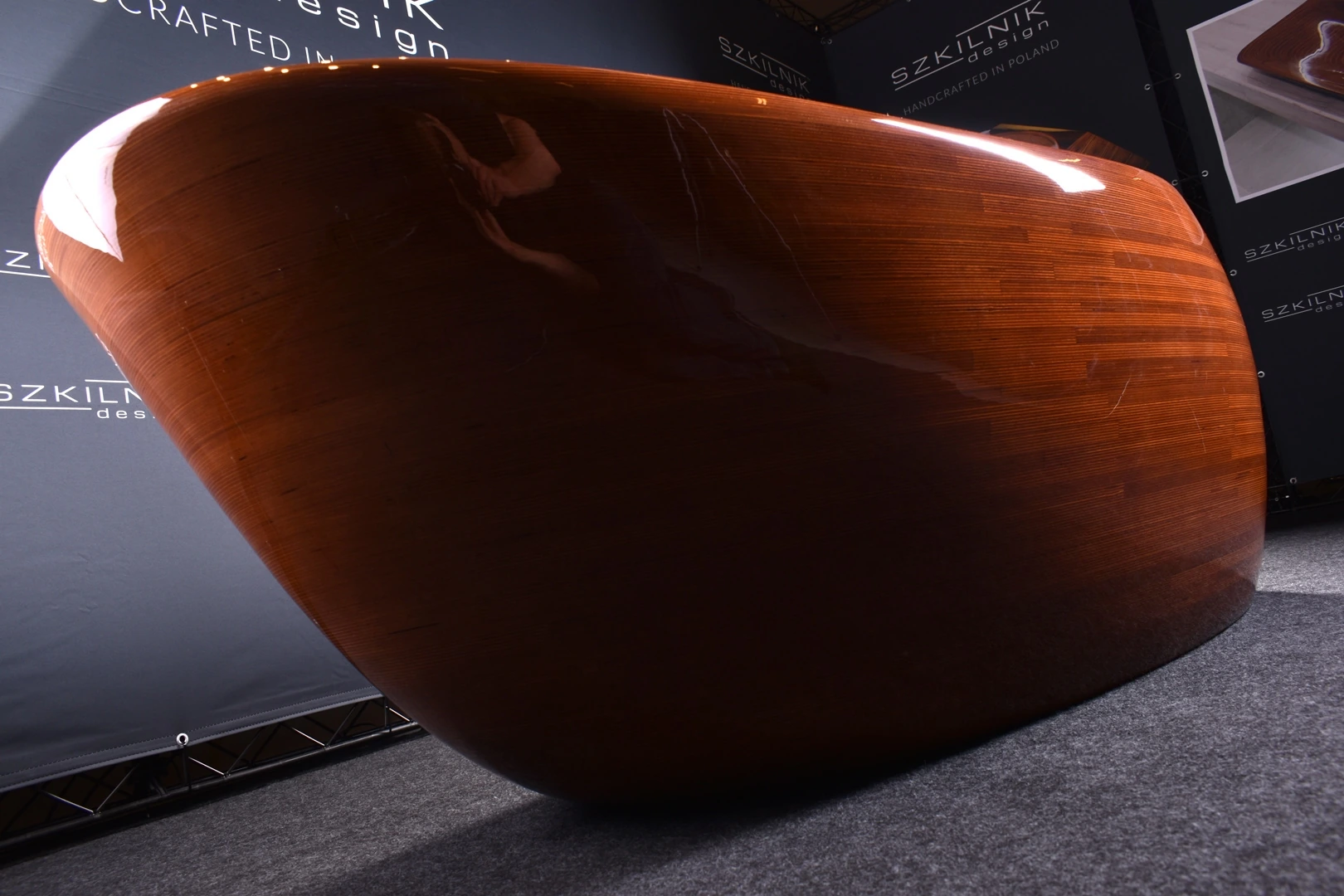
The world of wooden baths and washbasins is diverse and rich, encompassing a wide range of styles, types, and designs. From the traditional to the contemporary, the variety of these fixtures reflects the evolving tastes and technologies in interior design.
Overview of Types Wooden Bathtubs
Wooden baths and washbasins come in various types, each with its unique charm and functionality. Freestanding wooden baths, for instance, are a popular choice for their aesthetic appeal and versatility in placement. They often become the centerpiece of a bathroom, exuding elegance and warmth. Integrated washbasins, on the other hand, are designed to blend seamlessly with wooden countertops or vanity units, creating a cohesive and harmonious look.
Another category is the drop-in wooden bath, designed to fit into a pre-built frame or decking. This style allows for a custom look that can integrate with the overall bathroom design.
Material Choices and Design Features
The choice of wood in baths and washbasins is crucial, as it not only determines the look but also the durability and maintenance needs. Teak is highly favored for its moisture resistance and longevity, making it ideal for wet environments. Cedar is another popular choice, known for its natural rot resistance and distinct aroma. Oak, with its classic grain and strength, is often used for a more traditional aesthetic.
Design features of wooden baths and washbasins can vary greatly. Some baths are carved from a single wood block, offering a rustic, organic feel. Others are constructed from joined wooden planks, allowing for more intricate shapes and designs. And what if you have a bathroom too small for a bathtub? Many wooden washbasins incorporate modern elements like undermount or vessel sinks, blending the natural beauty of wood with contemporary design. Wall-mounted wooden washbasins are also gaining popularity, especially in modern, space-conscious settings. They offer a minimalist yet stylish approach to bathroom design.
Note that wooden bathtubs and sinks are luxury products. You cannot compare bathtubs that are mass-produced from conglomerate or acrylic despite the sometimes interesting design. (such as: homedepot.com)
Customization and Modern Innovations of Wooden Bathtubs
Customization is a key aspect of wooden baths and washbasins, allowing homeowners to tailor their fixtures to specific tastes and needs. This can include choosing the type of wood, finish, shape, size, and additional features like built-in seating or adjustable headrests in baths.
Modern innovations have also greatly influenced the design of wooden baths and washbasins. Advances in waterproofing and wood treatment technologies have enhanced the durability and longevity of these fixtures. Additionally, many designers are now incorporating eco-friendly practices, such as using reclaimed wood or sustainably sourced materials, making wooden baths and washbasins more appealing to environmentally conscious consumers.
Conclusion
The range of types and designs of wooden baths and washbasins is a testament to the versatility and enduring appeal of wood in interior design. From the rustic charm of a traditional cedar tub to the sleek elegance of a teak wall-mounted washbasin, the options are vast and varied. As technology and design preferences evolve, wooden baths and washbasins continue to adapt, offering a perfect blend of beauty, functionality, and sustainability.
Benefits and Drawbacks of Wooden Baths and Washbasins
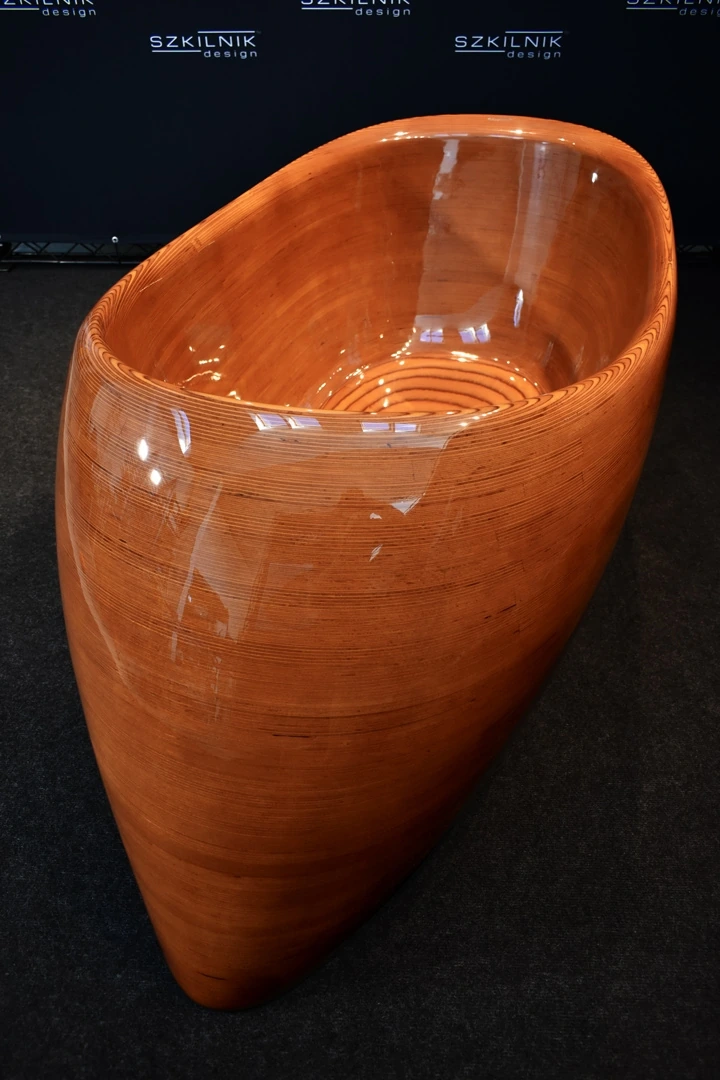
Wooden baths and washbasins, while steeped in history and aesthetic appeal, come with their own set of advantages and challenges. Understanding these can help in making informed decisions about incorporating them into modern bathrooms.
Aesthetic Appeal
One of the most significant benefits of wooden baths and washbasins is their aesthetic appeal. Wood brings a natural, warm, and luxurious element to bathroom spaces. Each piece, with its unique grain and texture, adds character and a sense of bespoke craftsmanship. In a world where personalization and natural materials are increasingly valued, wooden baths and washbasins stand out for their beauty and individuality.
Durability and Maintenance of Wooden Bathtubs
(does not apply to products Szkilnik Design using newer technology, more information: technology, maintenance)
The durability of wooden baths and washbasins largely depends on the type of wood and the quality of construction. Woods like teak, cedar, and oak are known for their longevity and resistance to moisture and decay. However, even the most durable woods require proper maintenance to retain their beauty and functionality. Regular sealing and careful cleaning are essential to prevent water damage, warping, or mold growth. While the upkeep can be more demanding than standard materials like porcelain or acrylic, many find the effort worthwhile for the unique aesthetic wood provides.
Environmental Considerations of Wooden Baths
Wooden baths and washbasins can be an eco-friendly choice, particularly when crafted from sustainably sourced or reclaimed wood. They offer a renewable alternative to synthetic materials, reducing the environmental footprint. However, it’s important to consider the source of the wood and the environmental impact of the manufacturing process. Choosing fixtures made from locally sourced, sustainably harvested wood can minimize this impact.
Comfort and Warmth advantages of Wooden Bathtubs
Wood naturally retains heat, making wooden baths especially comfortable and inviting. The insulating properties of wood keep bath water warm for longer periods compared to other materials, enhancing the bathing experience. Additionally, the tactile warmth of wood underfoot and to the touch in washbasins adds a cozy, comforting element to bathroom environments.
Customization Possibilities
Wooden baths and washbasins offer extensive customization options. They can be crafted to fit specific dimensions, shapes, and design preferences. This flexibility allows for unique bathroom designs that reflect individual styles and needs. However, this customization can come at a higher cost compared to standard off-the-shelf options.
Conclusion
In conclusion, wooden baths and washbasins offer a blend of aesthetic beauty, natural warmth, and the potential for eco-friendliness and customization. However, they also require careful consideration in terms of maintenance, durability, and cost. For those willing to invest in their upkeep and appreciate the unique qualities of wood, these fixtures can add an unparalleled level of elegance and character to bathroom spaces.
Installation, Care, and Maintenance of Wooden Baths and Washbasins
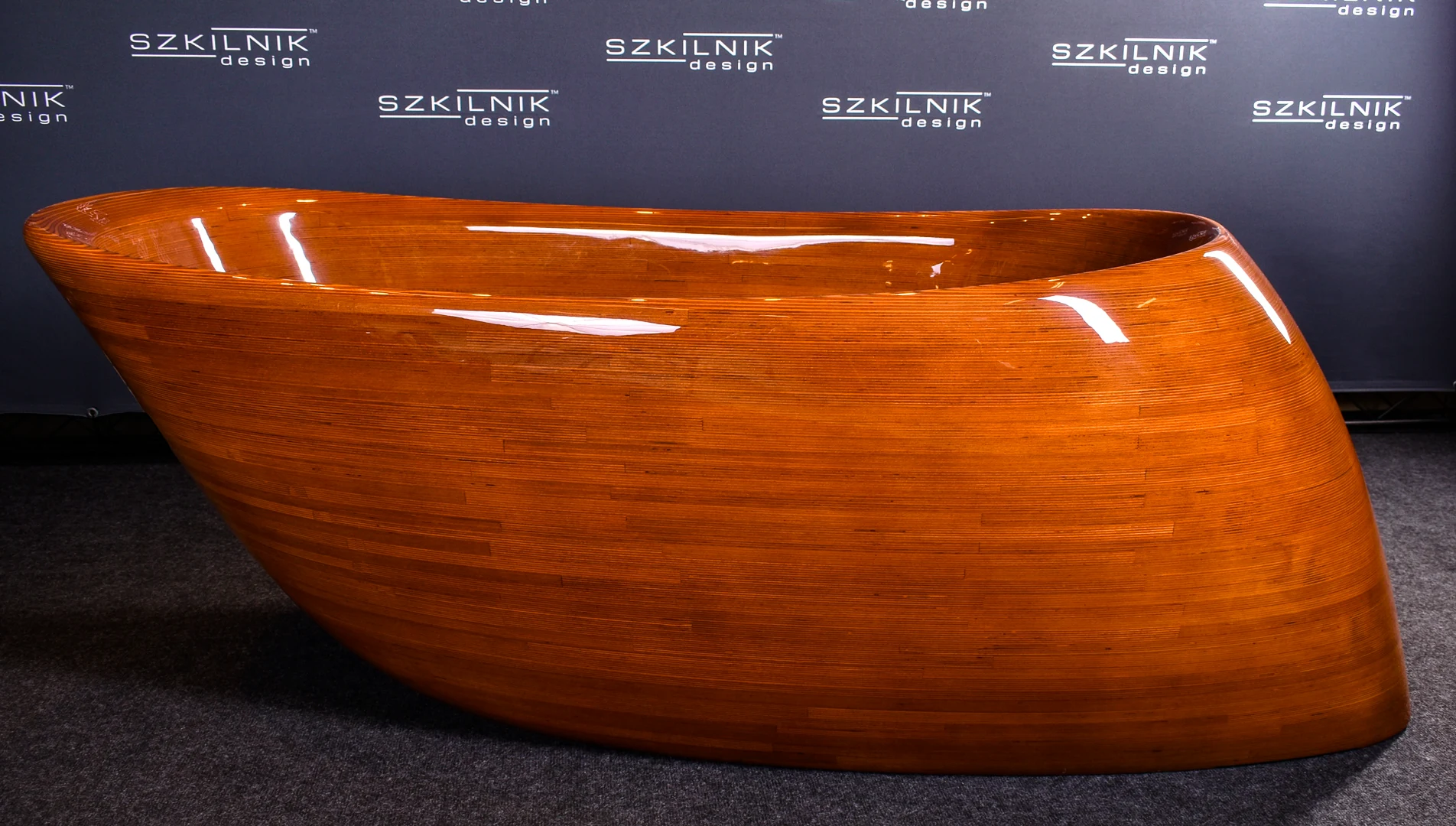
Integrating wooden baths and washbasins into a bathroom requires not only a keen eye for design but also an understanding of the unique care they demand. From installation to regular maintenance, these fixtures necessitate a dedicated approach to ensure their longevity and preserve their natural beauty.
Installation Process of Wooden Bathtubs
Installing wooden baths and washbasins is a delicate process, often necessitating the expertise of a professional. Unlike standard materials, wood has specific requirements that must be meticulously adhered to:
- Preparation: The area where the bath or washbasin will be installed must be adequately prepared. This involves ensuring a perfectly level surface and adequate support, especially for heavier wooden baths.
- Plumbing Considerations: Wooden fixtures may require specific plumbing considerations. It’s crucial to ensure that all fittings are tightly sealed to prevent leaks, as prolonged exposure to moisture can damage wood.
- Sealing and Protection: Before installation, it’s essential to seal the wood properly. This involves applying waterproof and moisture-resistant sealants that protect the wood from water damage while maintaining its natural appearance.
Regular Care and Maintenance
(does not apply to products Szkilnik Design using newer technology, more information: technology, maintenance)
The maintenance of wooden baths and washbasins is more demanding than that of conventional materials, but it’s crucial for their durability:
- Daily Cleaning: Use gentle, non-abrasive cleaners to clean wooden surfaces. Harsh chemicals should be avoided as they can strip the wood of its protective sealants and natural oils.
- Avoid Prolonged Water Exposure: Despite being designed for water use, wooden baths should not be left with standing water. After use, it’s advisable to wipe them down to prevent water absorption, which can lead to swelling or warping.
- Regular Sealing: Regular resealing of the wood is necessary to maintain its water-resistant barrier. This frequency depends on the type of wood and the specific sealant used but is typically recommended once or twice a year.
Repair and Restoration of Wooden Bathtubs
(does not apply to products Szkilnik Design using newer technology, more information: technology, maintenance)
Over time, wooden baths and washbasins might require repairs or restoration:
- Surface Damage: For minor scratches or dents, lightly sanding the area and applying a fresh coat of sealant or oil can often remedy the issue.
- Deeper Damage: In cases of more severe damage, such as cracks or significant warping, professional restoration may be required. This could involve refinishing the entire surface or replacing parts of the wood.
- Regular Inspections: Conducting regular inspections can help catch potential problems early, making repairs more manageable and less expensive.
Professional Help
Given the unique nature of wooden bathroom fixtures, consulting with professionals is often a wise decision:
- Expert Installation: For installation, seeking the help of a professional who has experience with wooden fixtures is advisable. They can address the nuances of wood installation, ensuring the longevity of the fixture.
- Maintenance and Care Advice: Professionals can also provide tailored advice on care and maintenance, recommending products and practices that are best suited to the specific type of wood and design of the fixture.
Environmental Considerations for Wooden Bathtubs
Choosing wooden baths and washbasins also involves environmental considerations:
- Sustainable Sourcing: Opting for woods from sustainable sources or reclaimed wood can minimize environmental impact.
- Longevity and Waste Reduction: By maintaining and caring for wooden baths properly, their lifespan can be significantly extended, reducing waste and the need for frequent replacements.
Conclusion
In essence, wooden baths and washbasins are more than just functional fixtures; they are investments in the aesthetic and comfort of a home. Their installation and care require a dedicated approach, but the rewards are substantial. These pieces bring a unique, natural beauty to bathroom spaces, creating a serene and luxurious atmosphere. With proper installation, regular maintenance, and the occasional professional consultation, wooden baths and washbasins can be timeless additions to any home, enriching the living space with their natural elegance and charm for years to come.
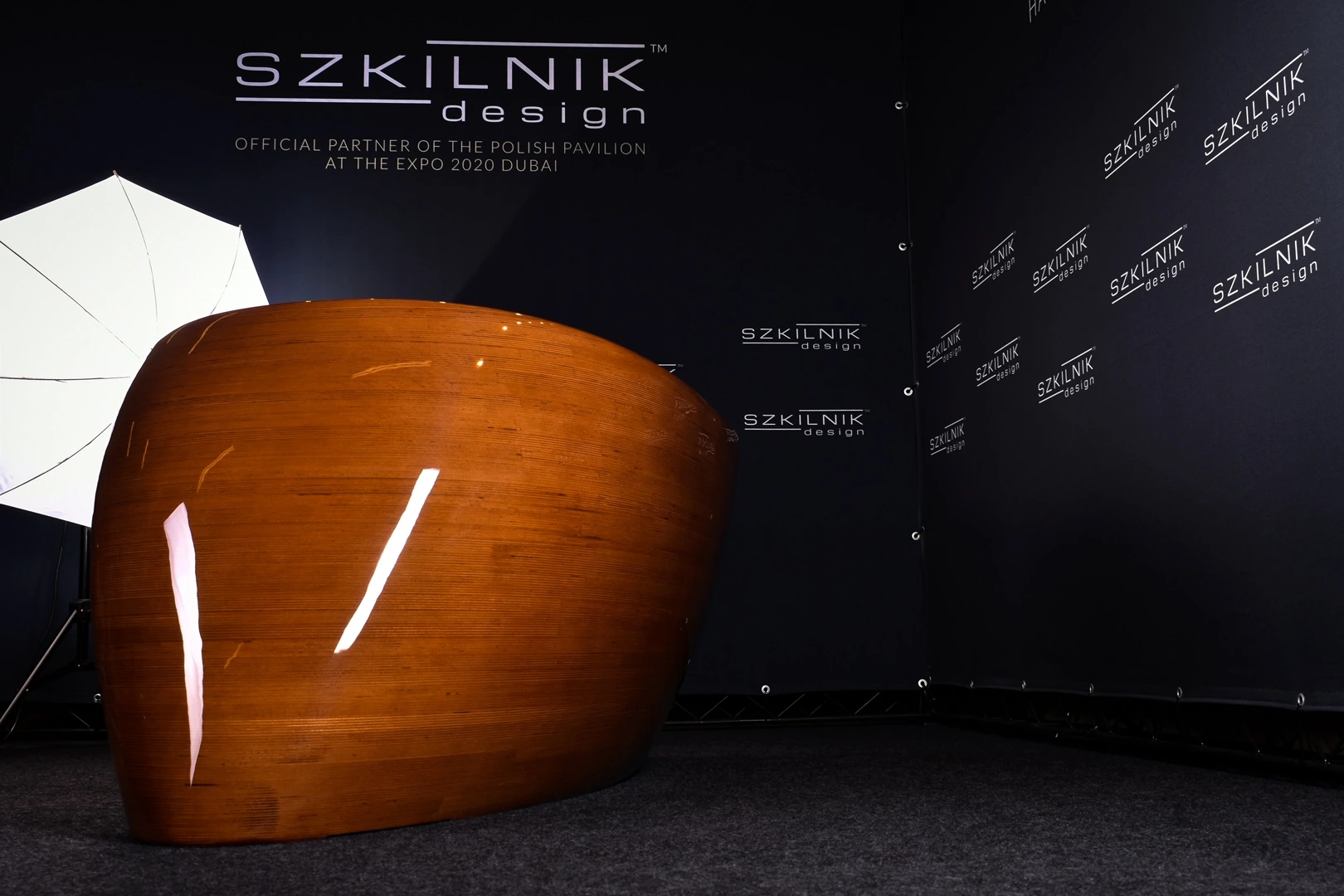


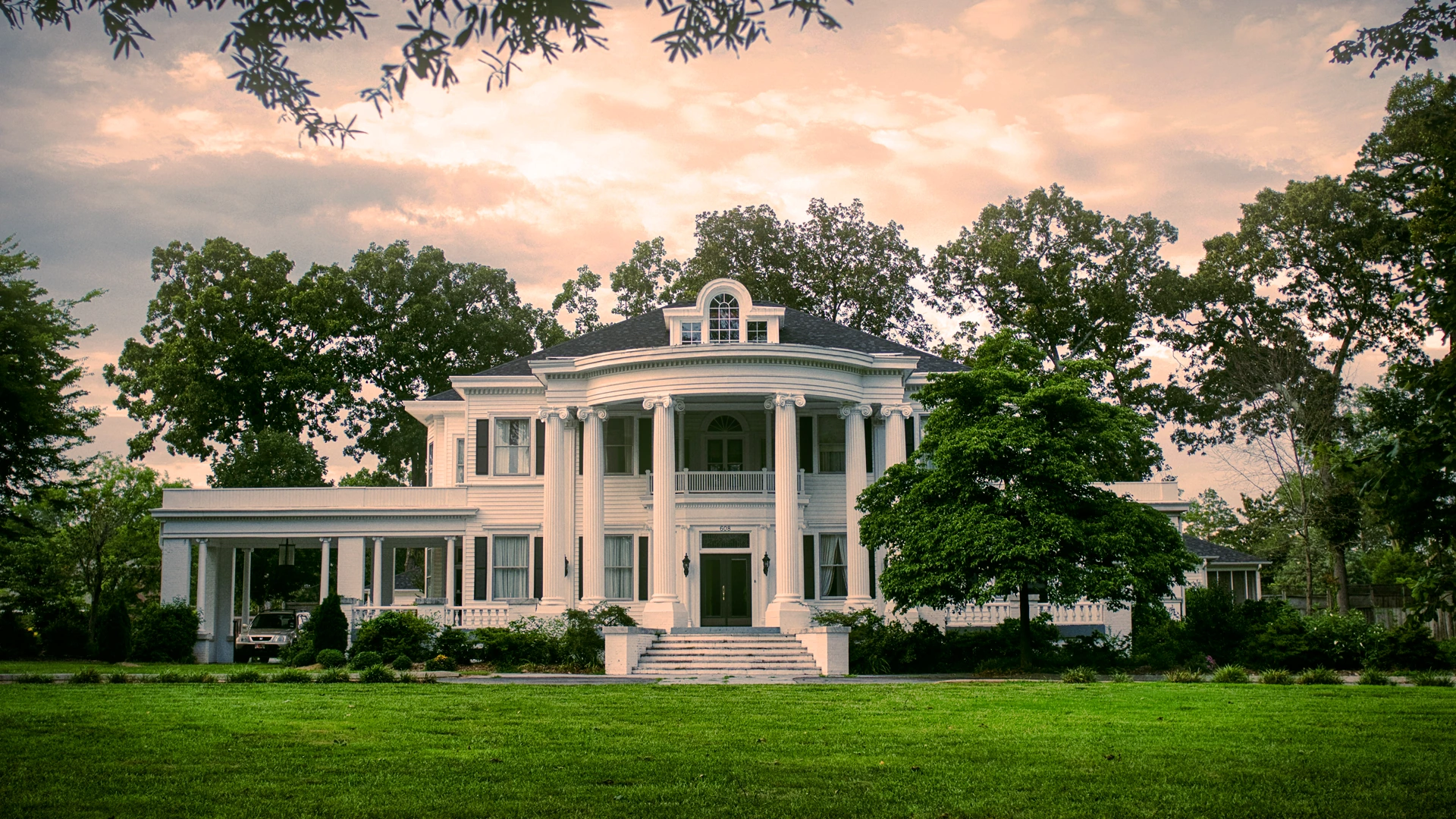
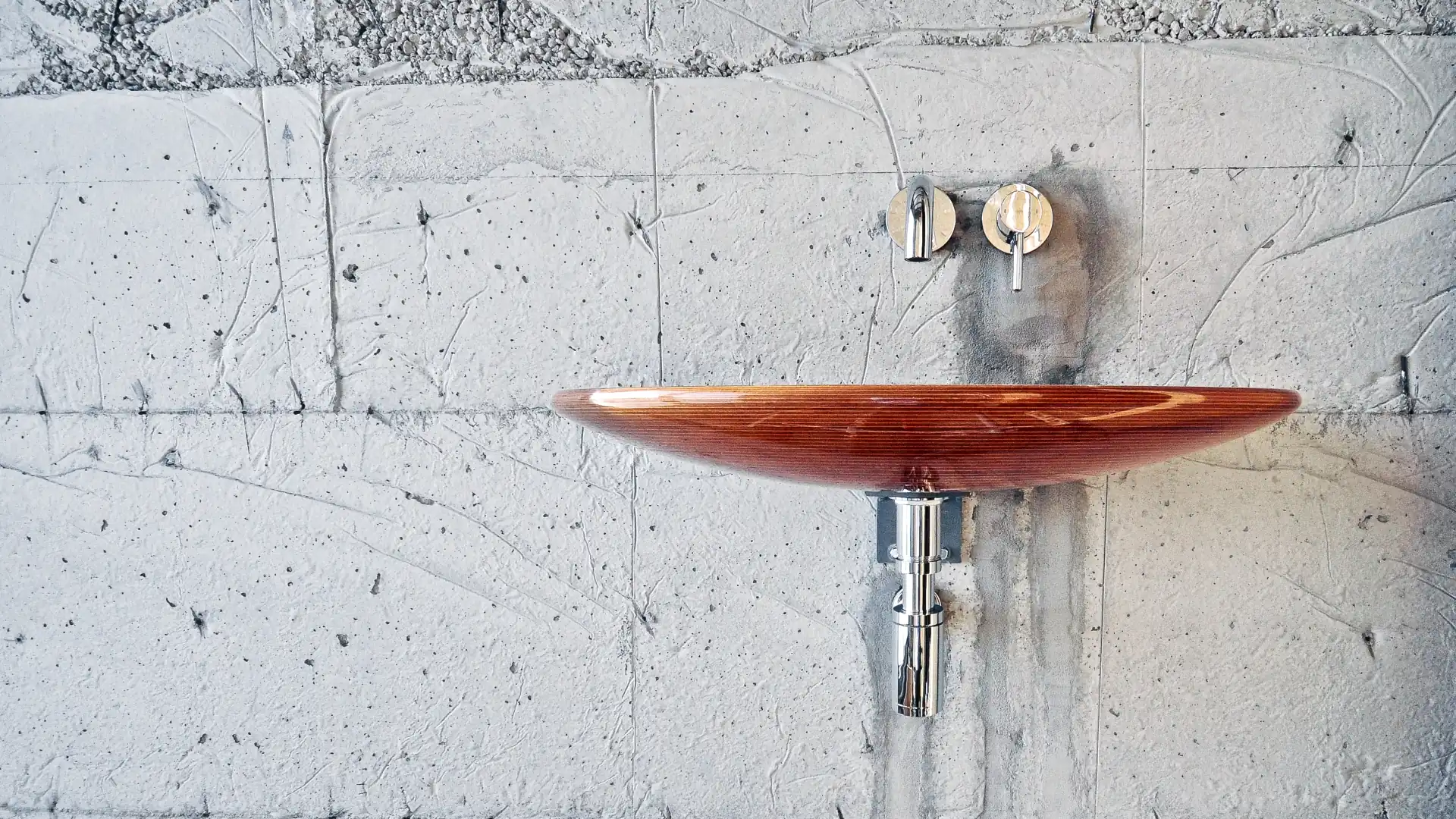
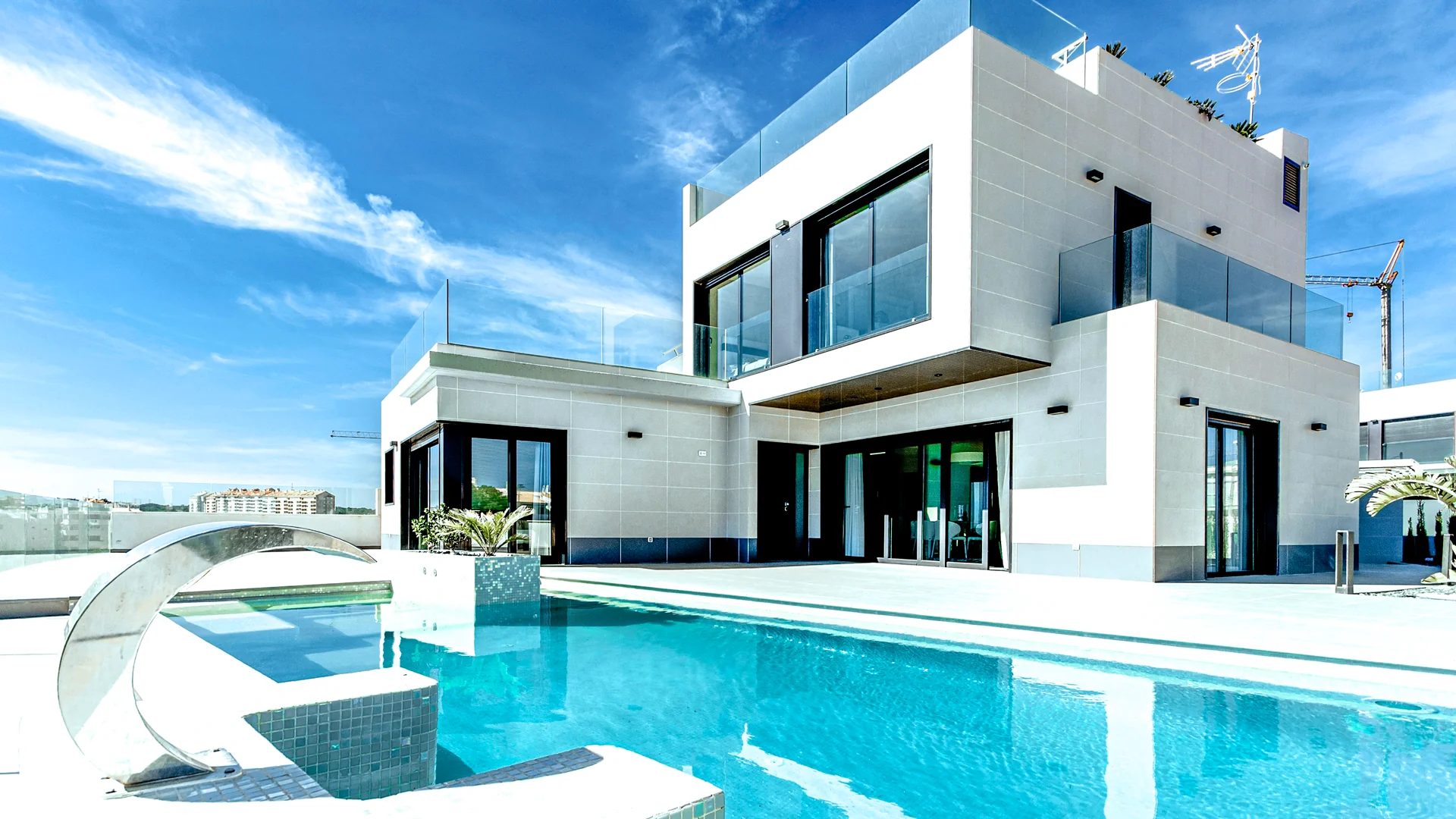
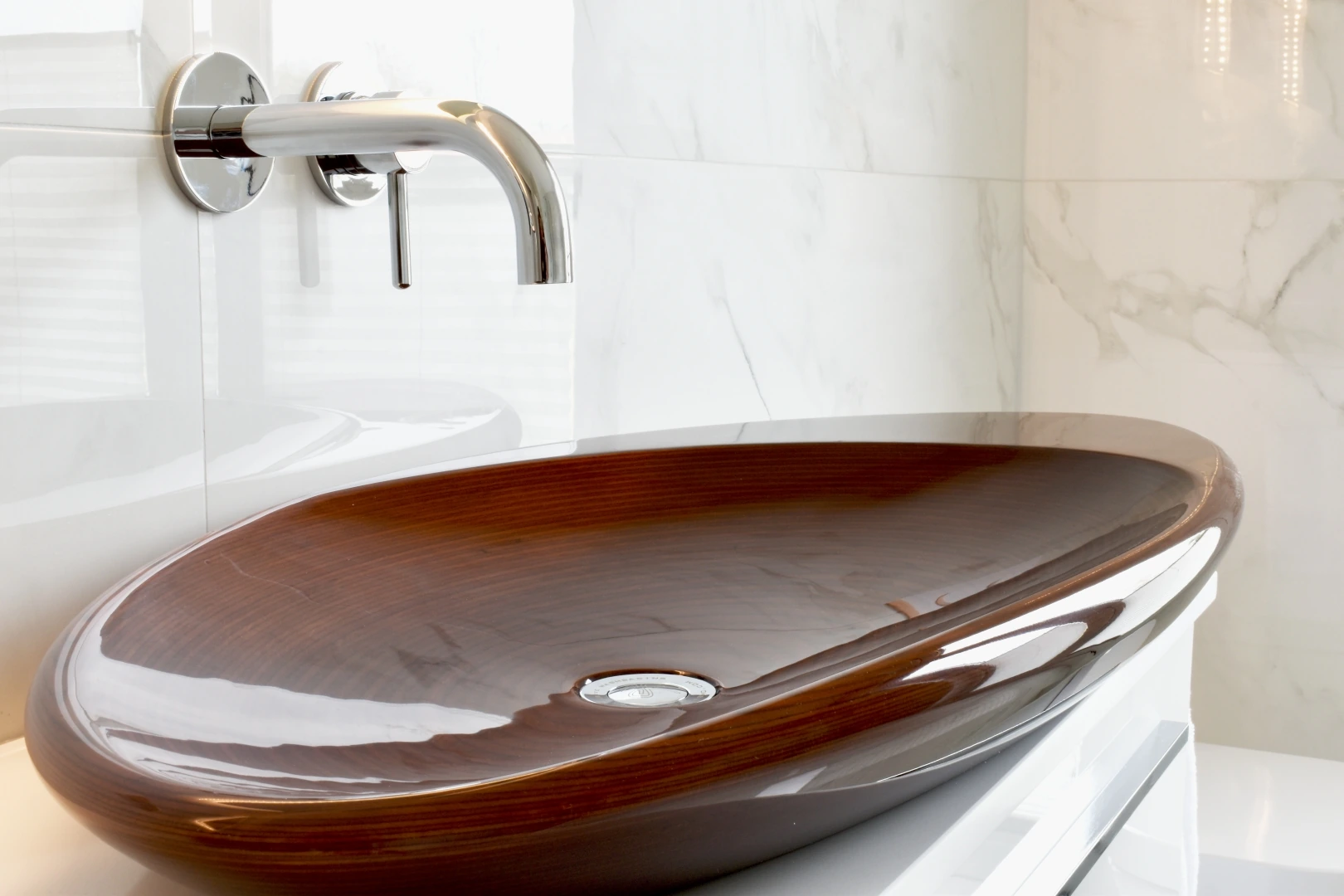

Leave a Reply